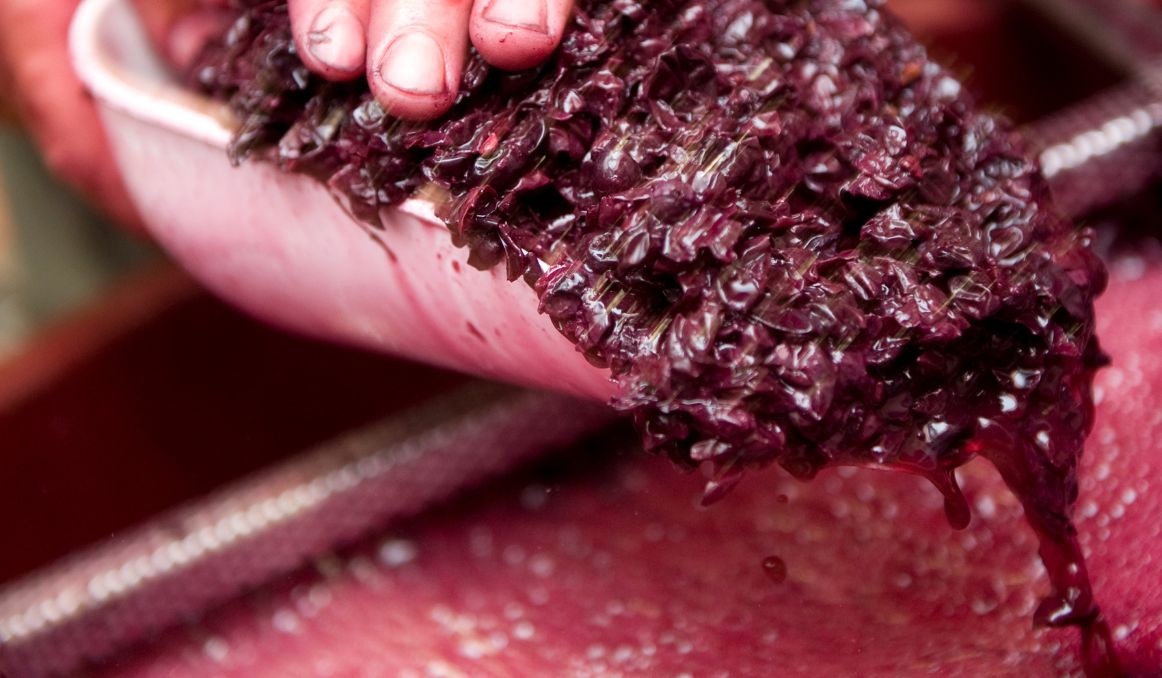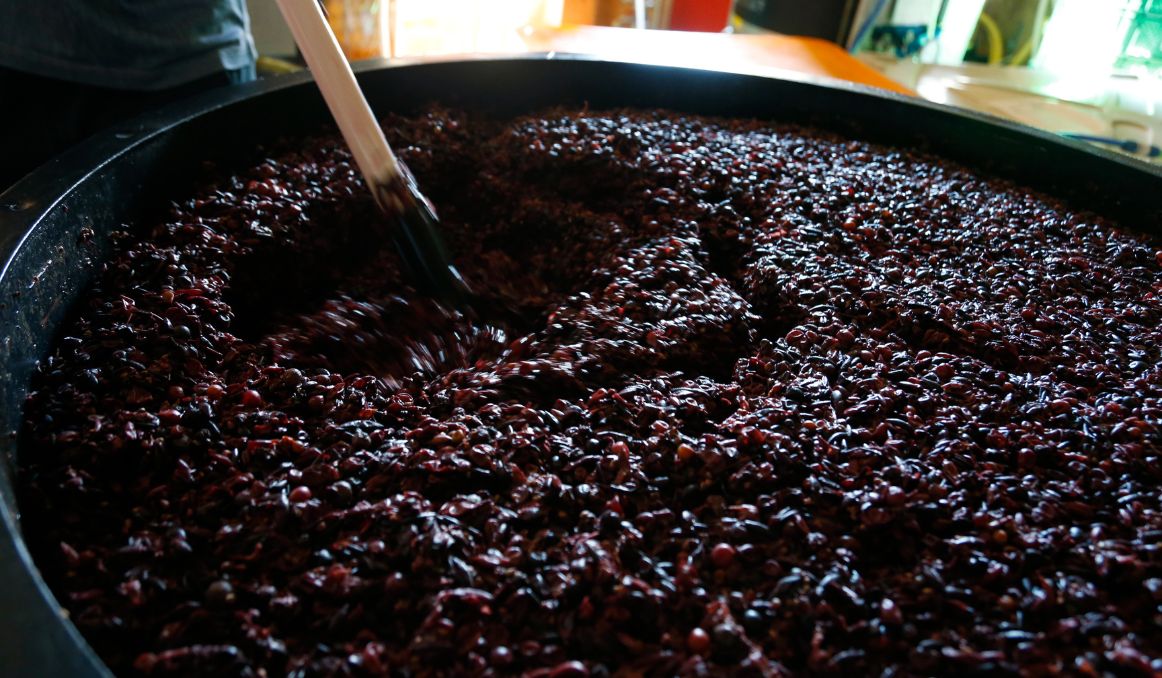Can You Make Wine without Yeast?
Have you been wondering, “can you make wine without yeast?” If so, the answer is no.
Unequivocally, beyond doubt, you cannot make wine without yeast.
However, there is a gray area here that exists because of industrialization, and our understanding of yeast.
So, the topic is worth exploring.

Yeast
Yeast is, in all the world, the absolute only ingredient necessary for the production of alcohol.
This single-celled, living organism reproduces on its own, asexually, and uses sugar for energy.
It has been around, as far as we know, for at least hundreds of thousands of years. It is a relative of the oldest life forms on earth – fungus.
Yeast is present on virtually every surface, and our mouths and our bodies, in the air, everywhere.
As long as the environment is not too hot, as temperatures over 110° Fahrenheit will kill yeast, and not too cold, as freezing temperatures will put yeast life on hold, yeast will be alive, well, and in search of fermentable sugars.
In the same way that humans eat plants and animals for energy, plants eat sunlight and water for energy, and animals eat either plants or animals for energy, yeast eats sugar.
The biological process goes as follows: yeast senses sugar in its near environment, it consumes the sugar for energy, and then it expels ethanol and carbon dioxide as waste products.
That’s right. Alcohol is a waste product of yeast.
And it is the only organism on earth we have found that will produce alcohol.
How Wine Is Made
Wine is perhaps the first alcoholic beverage on earth, potentially even predating humans.
Think about it, all it takes to make wine is fruit and yeast.
Long before humans came along, as we are at the very end of this evolutionary cycle that we’re currently living, grapes likely sat on the vine, also likely covered in a local yeast, and as the grapes ripened and fell from the vine, expelling juice, the yeast present would have consumed the sugars in those grapes and converted those sugars to alcohol and carbon dioxide, leaving wine on the jungle floor.
Humans likely discovered wine by accident, in similar fashion.
Crushed grapes at the bottom of the barrel, stored for later, attracted yeast, and left wine sitting at the bottom of a barrel of grapes. A brave soul, or perhaps just somebody who refused to let any food or beverage go to waste, tried this liquid at the bottom of the barrel, got a little buzz, and wine was born into the human consciousness.
The process is so simple, in fact, that wine is still made in much the same way today.
The winemaker will harvest the grapes, crush them, allow the juice to sit with the stems and skins, filter the juice out, add yeast, and allow the fermentation process to take place.
And the funny thing is, the grapes are not actually essential to the wine process. There are several fruit wines and that include berries, cherries, even watermelon. Add yeast to pretty much any fruit juice and you have wine.
Unless of course we’re talking about apples or pears, in which case, for some reason, we call it cider.
But the single most important ingredient is yeast.
Wine without Yeast
Which means what? That wine without yeast is simply fruit juice.
Crush grapes, berries, cherries, or watermelon, and don’t add yeast, and you just have juice.
At the same time, nonalcoholic wine is very different from juice. There is something about the result of the fermentation process that is highly sought after even by people who aren’t interested in drinking alcohol.
Thus to get nonalcoholic wine, the entire wine making process is still undergone, and the alcohol is removed afterward.
So it is a misconception to think that wine without yeast would be non-alcoholic wine. Non-alcoholic wine still requires yeast.
Non-alcoholic Wine

There are three ways in which nonalcoholic wine is made, and each one includes yeast.
In fact, with each method, the entire wine making process is undergone. The differences lie in how the alcohol is removed.
The first, and most obvious way to remove the alcohol is to bring the wine up to a high enough temperature that the alcohol is burned off. The problem with that is that many wine drinkers, even those who prefer nonalcoholic wine, feel that a lot of the other aromas and flavors of the wine are also removed.
The second method for removing alcohol is called vacuum distillation. This process removes alcohol and other volatiles at relatively low temperatures, and then adds back aromatics in afterwards.
The third way to remove alcohol uses a spinning cone, which employs centrifugal force to distill and vaporize the alcohol in order to remove it.
Homemade Natural Wine
Finally, what makes the question of wine without yeast complex is the issue of whether or not “yeast” is being used in the context of commercially produced yeast or wild yeast.
Because the reality is that some people may be wondering if you can make wine without adding in your own commercially purchased yeast.
And the answer to this question is a resounding yes.
In fact, that is how wine has been made historically for millennia.
It is quite a simple process.
Simply harvest grapes, crush them, allow them to sit in their juices for as long as you like, strain out all the solid sediment, cover your liquid with a cheese cloth, and allow wild yeast to do its job.
This is the traditional approach to winemaking.
Indeed, purists will argue that this is the only real way to make a local, organic wine.
The theory goes that local wild yeasts attracted to your grape juice are going to be more suited to making a good wine as both come from the local soil – or terroir.
In any event, it’s certainly worth experimenting with.
Cheers!
Passionate about the wine and/or beer making process? So are we! If you’re interested in finding out how you can use our technology to control fermentation and monitor your yeast, save work hours and improve the cost-efficiency of your business, drop us a line at [email protected] or check out our product pages:
- Oculyze FW (Fermentation Wine) Yeast Cell Counter App + Hardware
- Oculyze BB 2.0 (Better Brewing) Yeast Cell Counter App + Hardware
Also, you can now get access to a fully functional demo account to test your yeast via our Web App. Completely free of charge and with no commitment to purchase.


